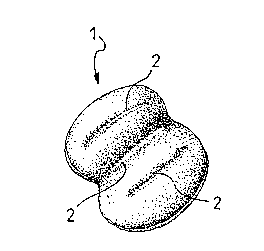Some of the information on this Web page has been provided by external sources. The Government of Canada is not responsible for the accuracy, reliability or currency of the information supplied by external sources. Users wishing to rely upon this information should consult directly with the source of the information. Content provided by external sources is not subject to official languages, privacy and accessibility requirements.
Any discrepancies in the text and image of the Claims and Abstract are due to differing posting times. Text of the Claims and Abstract are posted:
| (12) Patent: | (11) CA 2052361 |
|---|---|
| (54) English Title: | CRACKER TASTING BREAD-LIKE AND METHOD OF MAKING THE SAME |
| (54) French Title: | BISCOTTE AU GOUT DE PAIN ET METHODE DE FABRICATION |
| Status: | Term Expired - Post Grant Beyond Limit |
| (51) International Patent Classification (IPC): |
|
|---|---|
| (72) Inventors : |
|
| (73) Owners : |
|
| (71) Applicants : | |
| (74) Agent: | OYEN WIGGS GREEN & MUTALA LLP |
| (74) Associate agent: | |
| (45) Issued: | 1998-05-05 |
| (22) Filed Date: | 1991-09-27 |
| (41) Open to Public Inspection: | 1993-03-28 |
| Examination requested: | 1994-11-15 |
| Availability of licence: | N/A |
| Dedicated to the Public: | N/A |
| (25) Language of filing: | English |
| Patent Cooperation Treaty (PCT): | No |
|---|
| (30) Application Priority Data: | None |
|---|
A cracker having a bread-like taste is formed
from a dough for crackers which incorporates an aqueous
suspension of a mixture of flour and yeast and a fermented
mixture comprising flour and yeast.
Craquelin à saveur de pain formé à partir d'une pâte à craquelins contenant une suspension aqueuse d'un mélange de farine et de levure, ainsi qu'un mélange fermenté constitué de farine et de levure.
Note: Claims are shown in the official language in which they were submitted.
Note: Descriptions are shown in the official language in which they were submitted.

2024-08-01:As part of the Next Generation Patents (NGP) transition, the Canadian Patents Database (CPD) now contains a more detailed Event History, which replicates the Event Log of our new back-office solution.
Please note that "Inactive:" events refers to events no longer in use in our new back-office solution.
For a clearer understanding of the status of the application/patent presented on this page, the site Disclaimer , as well as the definitions for Patent , Event History , Maintenance Fee and Payment History should be consulted.
| Description | Date |
|---|---|
| Inactive: IPC expired | 2016-01-01 |
| Inactive: Expired (new Act pat) | 2011-09-27 |
| Grant by Issuance | 1998-05-05 |
| Inactive: Final fee received | 1998-01-07 |
| Pre-grant | 1998-01-07 |
| Inactive: Received pages at allowance | 1998-01-07 |
| Notice of Allowance is Issued | 1997-10-27 |
| Notice of Allowance is Issued | 1997-10-27 |
| Letter Sent | 1997-10-27 |
| Inactive: Application prosecuted on TS as of Log entry date | 1997-10-21 |
| Inactive: Status info is complete as of Log entry date | 1997-10-21 |
| Inactive: First IPC assigned | 1997-08-14 |
| Inactive: IPC removed | 1997-08-14 |
| Inactive: IPC assigned | 1997-08-14 |
| Inactive: Approved for allowance (AFA) | 1997-08-14 |
| Request for Examination Requirements Determined Compliant | 1994-11-15 |
| All Requirements for Examination Determined Compliant | 1994-11-15 |
| Application Published (Open to Public Inspection) | 1993-03-28 |
There is no abandonment history.
The last payment was received on
Note : If the full payment has not been received on or before the date indicated, a further fee may be required which may be one of the following
Please refer to the CIPO Patent Fees web page to see all current fee amounts.
| Fee Type | Anniversary Year | Due Date | Paid Date |
|---|---|---|---|
| MF (application, 6th anniv.) - standard | 06 | 1997-09-29 | 1997-08-20 |
| Final fee - standard | 1998-01-07 | ||
| MF (patent, 7th anniv.) - standard | 1998-09-28 | 1998-08-12 | |
| MF (patent, 8th anniv.) - standard | 1999-09-27 | 1999-08-11 | |
| MF (patent, 9th anniv.) - standard | 2000-09-27 | 2000-08-09 | |
| MF (patent, 10th anniv.) - standard | 2001-09-27 | 2001-08-27 | |
| MF (patent, 11th anniv.) - standard | 2002-09-27 | 2002-08-28 | |
| MF (patent, 12th anniv.) - standard | 2003-09-29 | 2003-08-27 | |
| MF (patent, 13th anniv.) - standard | 2004-09-27 | 2004-08-26 | |
| MF (patent, 14th anniv.) - standard | 2005-09-27 | 2005-08-25 | |
| MF (patent, 15th anniv.) - standard | 2006-09-27 | 2006-08-28 | |
| MF (patent, 16th anniv.) - standard | 2007-09-27 | 2007-09-24 | |
| MF (patent, 17th anniv.) - standard | 2008-09-29 | 2008-09-04 | |
| MF (patent, 18th anniv.) - standard | 2009-09-28 | 2009-09-22 | |
| MF (patent, 19th anniv.) - standard | 2010-09-27 | 2010-09-22 | |
| MF (application, 2nd anniv.) - standard | 02 | 1993-09-27 |
Note: Records showing the ownership history in alphabetical order.
| Current Owners on Record |
|---|
| BARILLA G. E R. F. LLI - SOCIETA PER AZIONI |
| Past Owners on Record |
|---|
| NOEL HAEGENS |
| ROMEO SIGNANI |
| STEFANO RIGHI |